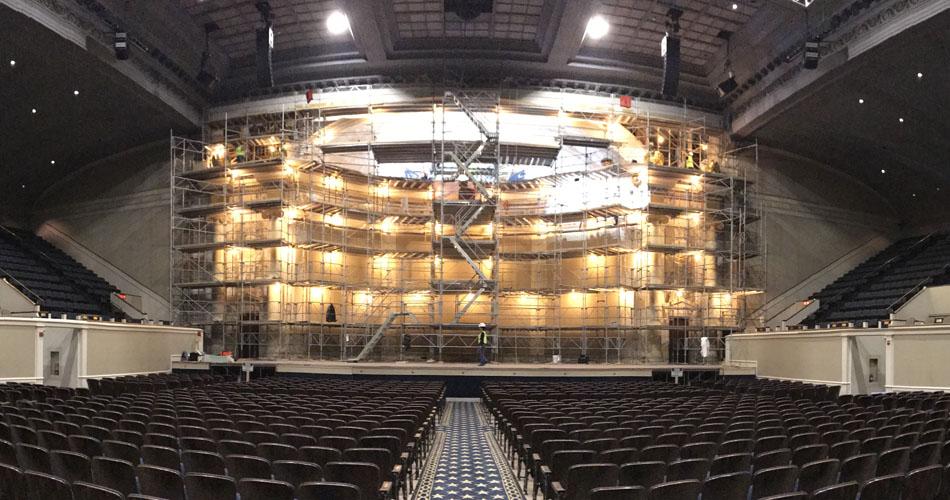Serving as President General has given me many unique opportunities, but the most recent is perhaps the most memorable. Monday of my scheduled August work week at National Headquarters included a visit to Constitution Hall to see the progress on the stage restoration. Nothing could have prepared me for the sight of scaffolding floor to ceiling, flag side to banner side. It appeared to be a stage set for West Side Story, on steroids. As I studied the maze of pipes and platforms more carefully, a series of stairs straight from the bottom to the top could be seen and miniature people became apparent as they worked to analyze and clean the flags, state names and eagles.
A sense of adventure took over and later in the day, with a photographer in tow, I began the ascent to the summit. Staring eye to eye with the majestic eagles and clearly seeing the Gadsden battle flag with its familiar coiled snake, I was struck with a sense of awe to consider these were originally completed in 1929. I have asked Katie Irwin, AIA, IIDA, project manager, and Anne Kopf, project architect, with Quinn Evans Architects to explain more about the process.

 Today's DAR
Today's DAR

